How To Make Beef Broth From Scratch || Stovetop Method
Rich, flavorful beef broth from scratch is a pantry staple worth mastering. Simmered low and slow with beef, aromatic vegetables, and optional seasonings, this broth adds depth to soups, stews, sauces, and more.
Looking to stock your pantry with homemade basics? Check out my Homemade Chicken Broth or Potassium Broth next.

Introduction
There’s something deeply satisfying about making beef broth from scratch. The depth of flavor, the aroma as it simmers on the stove, and the satisfaction of using every part of your ingredients makes this a truly rewarding kitchen project.
This simple recipe results in a rich, savory broth that can be used in a variety of dishes and is easy to store for future meals. It’s freezer-friendly, making it perfect for having a homemade broth on hand anytime you need it.
Why This Recipe Works
- Simple, no-fuss ingredients that create a delicious broth.
- No fancy equipment needed – just a pot and a stovetop.
- Infuses flavor over several hours for a deep, savory broth.
- Customizable seasonings to match any dish.
- Freezer-friendly in jars, trays, or silicone molds for easy storage.
Ingredients For Beef Broth

Here’s what you’ll need to get started:
- Beef: Any cut works — stew meat or bargain cuts are perfect.
- Water: Use filtered or untreated water.
- Carrots: Adds subtle sweetness.
- Celery: Use stalks and leafy tops.
- Onion: Yellow onions work best for deeper flavor.
- Salt, Pepper & Garlic (optional): Adds foundational flavor.
- Bay Leaves (optional): Subtle herbal note.
See recipe card below for full information on ingredients and quantities.
Would you like to save this post for later?
Variations or Substitutions
- Swap vegetables for veggie scraps stored in the freezer.
- Add different seasonings like thyme, rosemary, paprika, or tarragon.
- Lightly brown the meat and vegetables first for deeper flavor.
- Use an Instant Pot or slow cooker instead of stovetop.
- Make a double batch and freeze in different portion sizes.
How To Make Beef Broth
- Chop the beef:
Cut the beef into small pieces to expose more surface area, which will help infuse the broth with flavor.
- Chop vegetables:
Roughly chop the carrots, celery, and onions (no need to peel the carrots or onions).
- Add ingredients to the pot:
Place the chopped beef and vegetables into a large stockpot.

- Cover with water:
Fill the pot with cold water, leaving some space at the top for simmering.
- Season the broth:
Add salt, pepper, garlic, and bay leaves (if using) to the pot.

- Bring to a simmer:
Set the heat to low and bring the broth to a very gentle simmer — do not boil.
- Simmer for 4-6 hours:
Let the broth simmer gently for 4 to 6 hours, occasionally skimming off any impurities that rise to the surface.
- Cool and refrigerate:
Remove the pot from the heat and allow the broth to cool. Refrigerate it overnight to allow the flavors to deepen.
- Reheat and strain:
The next day, reheat the broth, then strain it using a fine mesh strainer to remove solids before serving or storing.
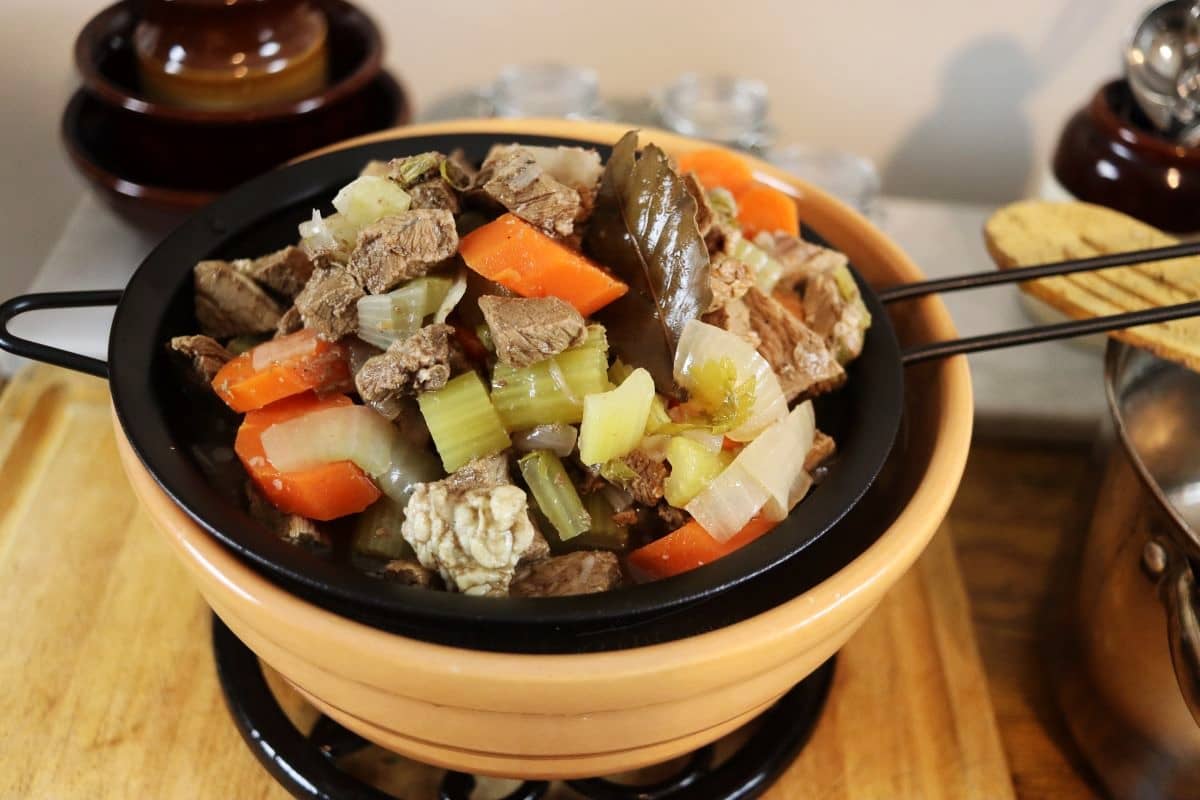
Recipe FAQS
No. Stock is made with bones; this broth is made with meat and vegetables.
Yes. Freeze in jars, silicone muffin cups, or ice cube trays.
That’s fine! Keep it plain and season when using in recipes.
This extra step deepens the flavor by allowing more extraction during both the refrigeration and the reheating process.
Serve
Use your homemade beef broth in soups, stews, gravies, or sauces. Cook grains like rice or barley in broth for added richness, or add a splash when sautéing vegetables. It even works in mashed potatoes and pan sauces.
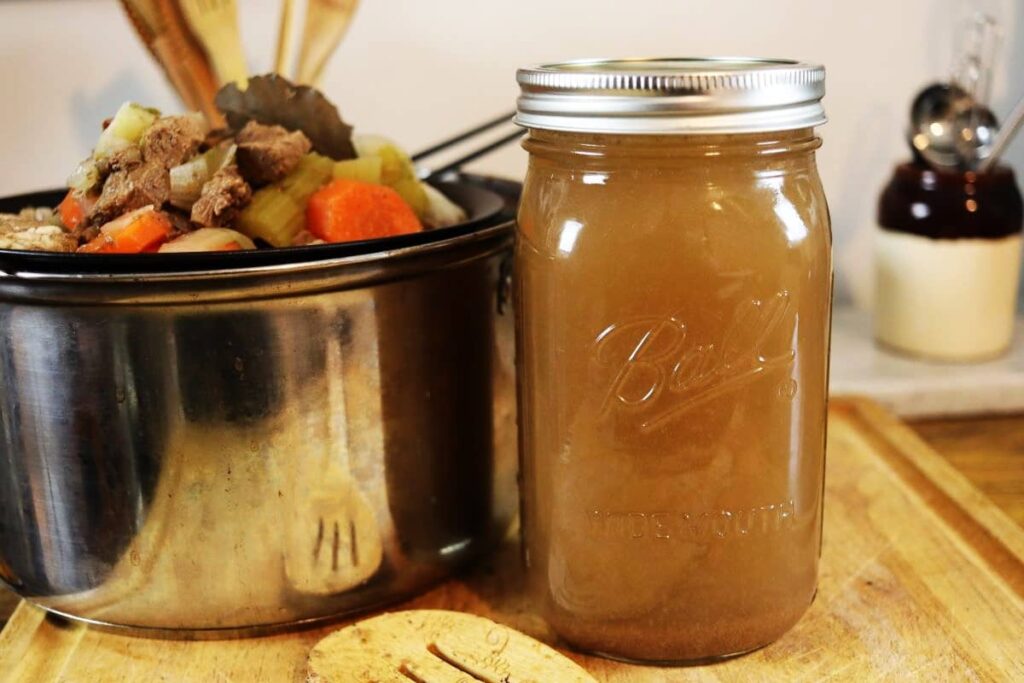
Expert Tips
- Chill broth before straining for enhanced flavor.
- Leave beef fat on while cooking; skim after chilling.
- Use a fine mesh strainer to remove solids.
- Freeze in small portions for flexible cooking options.
- Label with date so older batches get used first.

Beef Broth From Scratch
Equipment
- Large stock pot
- Sharp knife and cutting board
- Strainer
Ingredients
- 6 cups pure water
- 1 1/2 lbs beef
- 3 carrots
- 3 celery stalks
- 1 yellow onion
- 2 bay leaves
- 1/2 tsp salt
- 1/2 tsp ground black pepper
- 1/2 tsp granulated garlic
Instructions
- Cut the beef into small pieces: Helps release flavor into the broth.
- Cut the vegetables into small pieces: Ensures the flavor infuses evenly.
- Place all ingredients in a large stock pot: Combine beef, vegetables, bay leaves, salt, pepper, and garlic.
- Put on the stove and bring to a low simmer: Heat on medium-high until simmering, then lower the heat.
- Put a lid on the pot: Keeps the heat in for a consistent simmer.
- Simmer for 6 hours: Stir occasionally, checking the water level to ensure it doesn’t evaporate too much.
- Remove from the heat and allow to come to room temperature: Let it cool down naturally.
- Place in the refrigerator for at least 12 hours: This allows the flavors to develop.
- Remove from the refrigerator and bring to a low simmer: Reheat the broth gently over low heat.
Notes
- Use beef cuts like oxtail or shank: These cuts provide a richer flavor.
- Adjust the vegetable amounts: Customize the broth to your taste preferences.
- Skim the fat off the top during simmering: For a clearer broth.
- Store in the refrigerator for up to 5 days: Or freeze for longer storage.


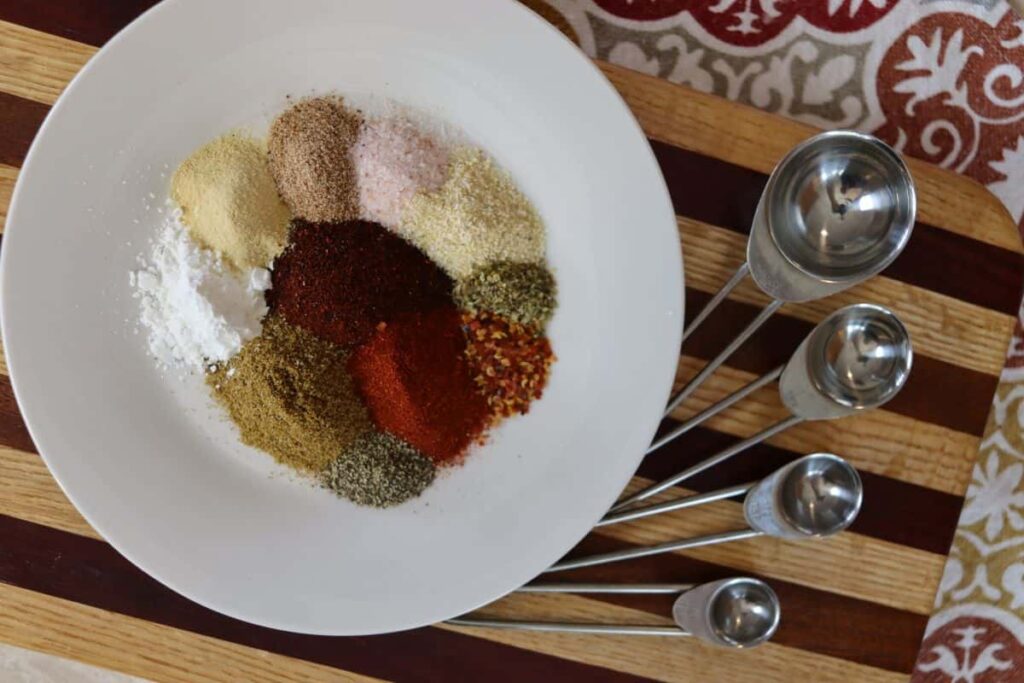
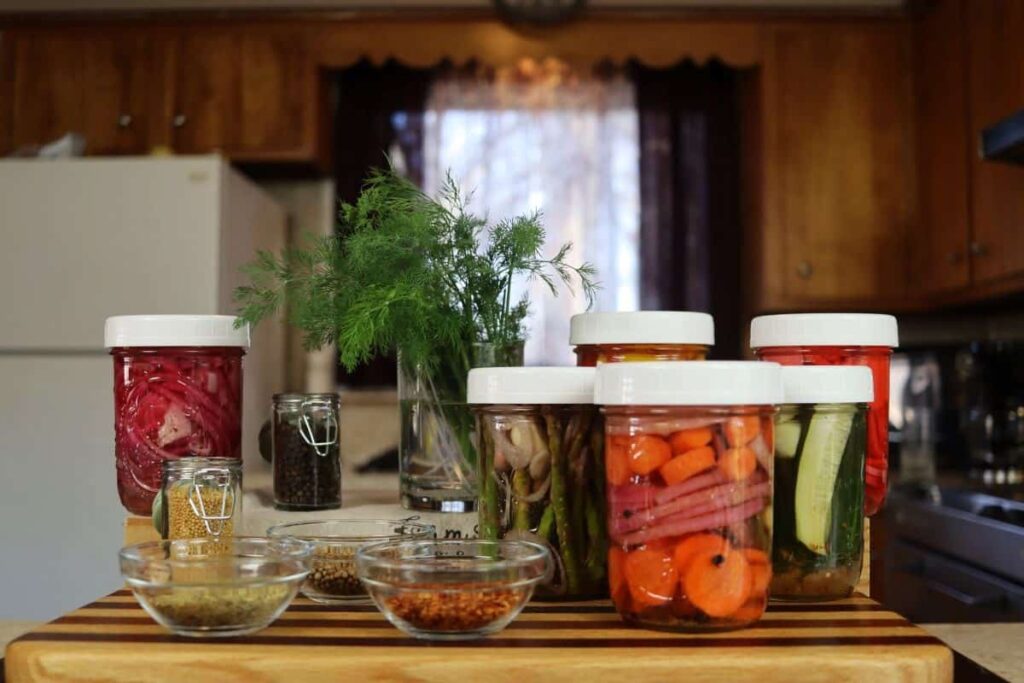
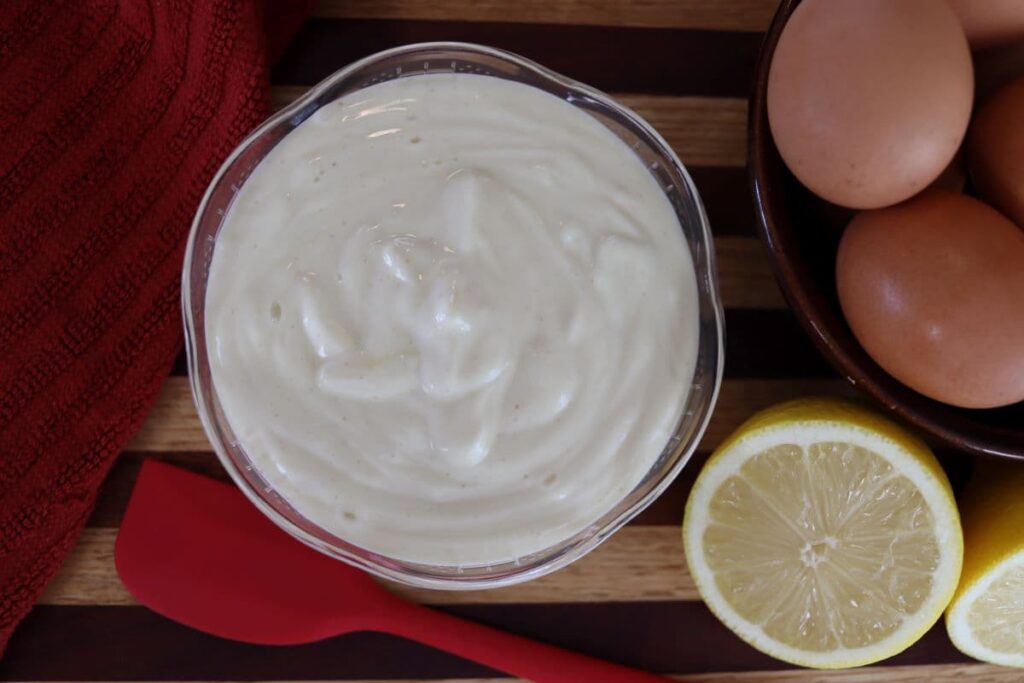
This homemade beef broth is rich, flavorful, and so worth making from scratch — it adds incredible depth to soups, stews, and sauces. Plus, it’s a great way to make the most of simple ingredients. If you give this recipe a try, I’d love to hear how you used it or how it turned out! Feel free to leave a comment with your thoughts or any questions. Enjoy every hearty spoonful!